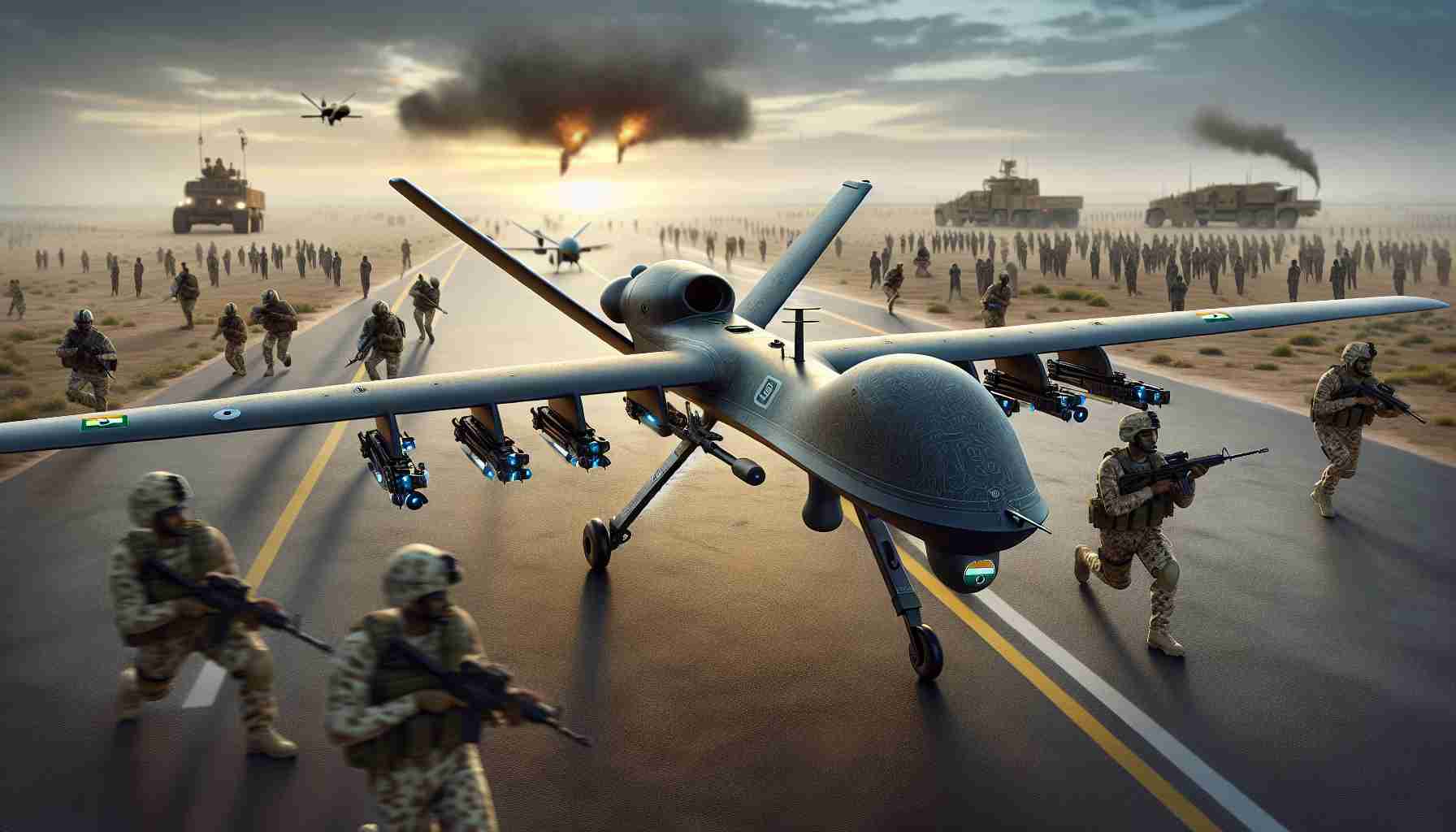- India is enhancing its counter-drone capabilities with advanced technologies as part of its Self-Reliant India initiative, aiming to secure its skies against threats from China and Pakistan.
- The Defence Research and Development Organization (DRDO) has introduced the VSHORAD system, a portable air-defense system using infrared-homing missiles to counter low-flying threats.
- The Bhargavastra system offers a comprehensive defense against drone swarms, using radar, electro-optical, and infrared sensors to detect and neutralize threats up to 10 km away.
- India is developing the Anti-UAS High Power Microwave (AUHPM Mk II) system focused on precision-energy beams to neutralize drones, alongside upgrading ammunition for its artillery.
- Efforts are underway to develop and integrate advanced platforms like the Carrier Air-Defence Track (CADET) system to streamline India’s defense strategy.
- These advancements aim to reduce India’s reliance on foreign defense suppliers, strengthening its military presence globally.
In a bold push towards aerial supremacy, India’s military is ramping up its efforts to develop cutting-edge counter-drone technologies. As tensions mount along its borders with China and Pakistan, India is making significant strides to safeguard its skies, aligning with its Self-Reliant India initiative. At the forefront of this defense revolution is the Defence Research and Development Organization (DRDO), which recently showcased its VSHORAD system. This man-portable air-defense marvel uses infrared-homing missiles to obliterate low-flying threats like drones, helicopters, and slow-moving aircraft, marking a potential upgrade from the Russian Igla-S system.
Adding to the arsenal is the Bhargavastra counter-drone system, a technological masterpiece developed to combat swarms of hostile drones. Boasting a lethal combination of radar, electro-optical, and infrared sensors, this system can detect and neutralize threats up to 10 km away with its micro-missiles and communication jammers. The Bhargavastra aims to seamlessly integrate into India’s air-defense network, offering a multilayered shield against aerial threats.
India isn’t stopping there; the nation is eyeing other innovative solutions, like the Anti-UAS High Power Microwave (AUHPM Mk II) system, designed to neutralize drones with precision-focused energy beams. As part of this initiative, India is also refining existing defense equipment by developing specialized 23-mm ammunition with proximity fuses, enhancing the effectiveness of its anti-aircraft artillery.
Facing a complex integration challenge, India is proactively seeking advanced platforms like the Carrier Air-Defence Track (CADET) system to unify its defense strategy. By investing in domestic research and development, India is poised not only to defend its skies but also to emerge as a formidable player in global defense technology, reducing dependence on foreign suppliers and bolstering its military might for future conflicts.
Inside India’s Counter-Drone Revolution: How Cutting-Edge Defense Tech is Shaping the Nation’s Security Landscape
Emerging Counter-Drone Technologies in India
As geopolitical tensions rise between India, China, and Pakistan, India is taking decisive action towards safeguarding its airspace through the development of state-of-the-art counter-drone technologies. Spearheading this initiative, the Defence Research and Development Organization (DRDO) is making significant progress in upgrading and expanding India’s aerial defense capabilities. This effort is aligned with India’s self-reliance goals, notably the Self-Reliant India initiative.
1. Key Innovations and Systems
– VSHORAD System: Highlighted as a significant advancement, the VSHORAD (Very Short Range Air Defense) system employs infrared-homing missiles to target low-flying threats—including drones and helicopters. It’s a modern upgrade from the older Russian Igla-S system.
– Bhargavastra Counter-Drone System: This sophisticated system features radar, electro-optical, and infrared sensors capable of detecting and countering drone swarms up to 10 km away. It integrates micro-missiles and communication jammers to neutralize detected threats.
– AUHPM Mk II System: An innovative approach to drone defense, this system uses high-power microwave technology to disable drones via precision-focused energy beams.
– Upgraded Ammunition: By developing specialized 23-mm ammunition equipped with proximity fuses, India is enhancing its artillery’s anti-aircraft capabilities.
2. Integration Challenges and Solutions
India recognizes the complexity of creating a unified defense network and is thus investing in advanced platforms like the Carrier Air-Defence Track (CADET) system. Such platforms aim to consolidate various defense technologies, ensuring a holistic and integrated defense strategy.
3. Market Analysis and Forecasts
The global counter-drone market is burgeoning, with experts predicting substantial growth in the coming years. This expansion is driven by increasing threats from hostile drone activities and the need for adaptable and advanced defense mechanisms. India’s proactive involvement in this sector not only fortifies its own security but positions it as an emerging leader in the global defense market.
4. Innovations and Trends
– Drone Swarm Defense: The Bhargavastra system’s ability to combat multiple drones simultaneously showcases a notable trend towards swarm defense technologies.
– Energy-Based Weapons: With the AUHPM Mk II, India is delving into next-gen weaponry that relies on directed energy—an area seeing rapid innovation worldwide.
5. Evaluation and Reviews
India’s advancements are viewed positively by defense analysts, who commend the country’s shift towards indigenous technology development. The potential reduction in dependency on foreign suppliers is seen as a strategic advantage for India’s defense sector.
Questions and Insights
– Why is India focusing on counter-drone technologies?
India aims to secure its airspace against increasing threats along volatile borders, asserting technological and military supremacy through indigenous innovations.
– What are the potential benefits of these technologies?
Enhanced national security, reduced dependency on foreign defense systems, and strengthened global market position as a defense technology exporter.
– How will these advancements impact global defense markets?
India’s entry as a significant player in defense technology could influence pricing, innovation, and global defense collaborations.
For more information on India’s defense initiatives, visit the [DRDO Official Website](https://www.drdo.gov.in/).




















